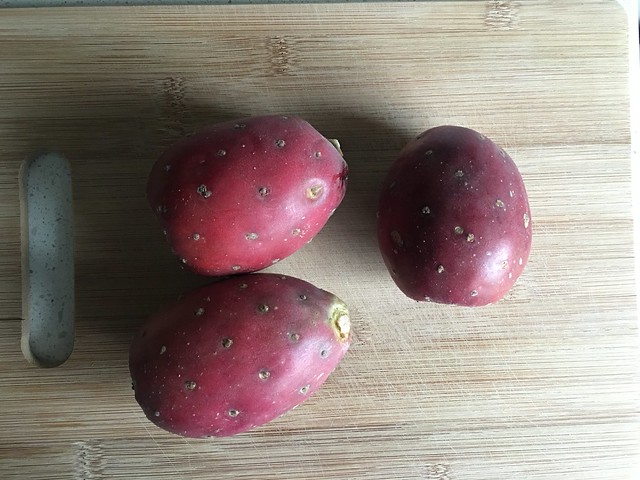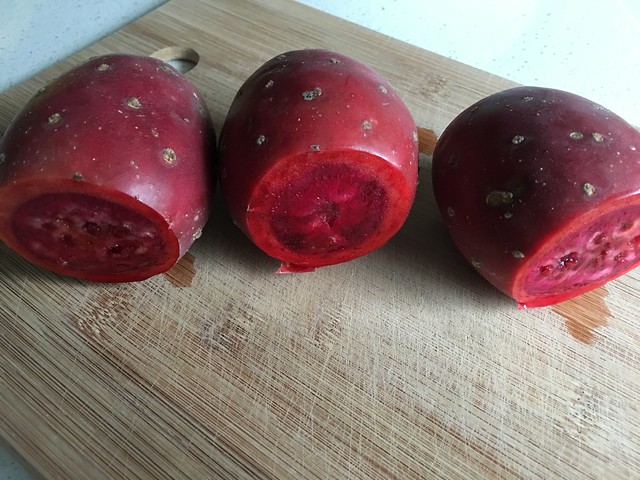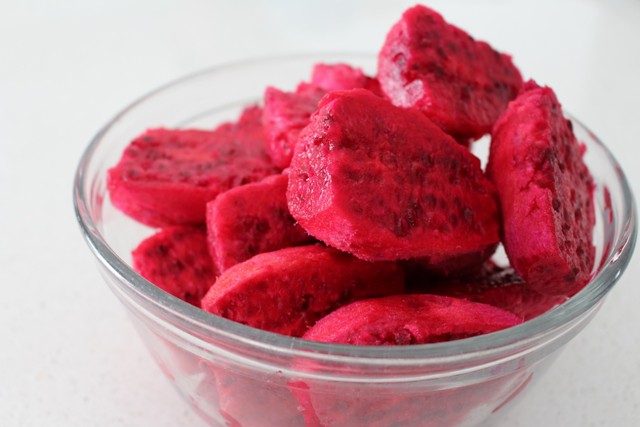You are here
Cactus Pears, Cactus Fruit, Prickly Pears
Prickly pears, also known as cactus pears or cactus fruit, are well worth adding to your diet whenever you can find them. I have consistently found that prickly pears are well digested, support healthy bowel movements, and offer protection against sunburn, most likely because of their abundance in richly pigmented antioxidants (betalain, betanin, and indicaxanthin).
The challenge is in preparing them to eat, as prickly pears come naturally covered with sharp spines - called glochids - that can give you painful slivers.
How to Peel Prickly Pears
Start by using a sharp knife to cut off both ends of your prickly pears. Be careful not to handle the pears anymore than you have to, as their sharp little hairs can get embedded in your skin like wood splinters. To be ultra safe, you can always handle them with quality rubber gloves, or use a dark-colored dish cloth to hold them down as you cut.
After you've removed the ends, prop the pears up on their wider end and slice straight through the flesh to create two equal halves. You'll find that the flesh is coloured bright red, much like beets, which also happen to be abundant in betalain, betanin, and indicaxanthin, three of nature's most powerful antioxidants.
You'll see a number of dark seeds embedded within the flesh of prickly pears, which are fine to enjoy along with the sweet red flesh.
If you take a close look at each half, you'll see where the flesh of prickly pears meets the outer skin, which is about a third of an inch thick in most cases. With minimal effort, you can use your fingers to separate the flesh from the skin, and collect all the edible flesh in your serving bowl.
And there you have it, sweet prickly pears to gobble up and nourish your cells with from top to bottom.
Per ounce, prickly pears actually provide more antioxidants than red beets, so not to worry if you see a red hue to your urine and stools - you should actually do a little jig in knowing that all of those health-enhancing pigments have touched and enhanced your cells before leaving your body.
Enjoy the magic of prickly pears.











